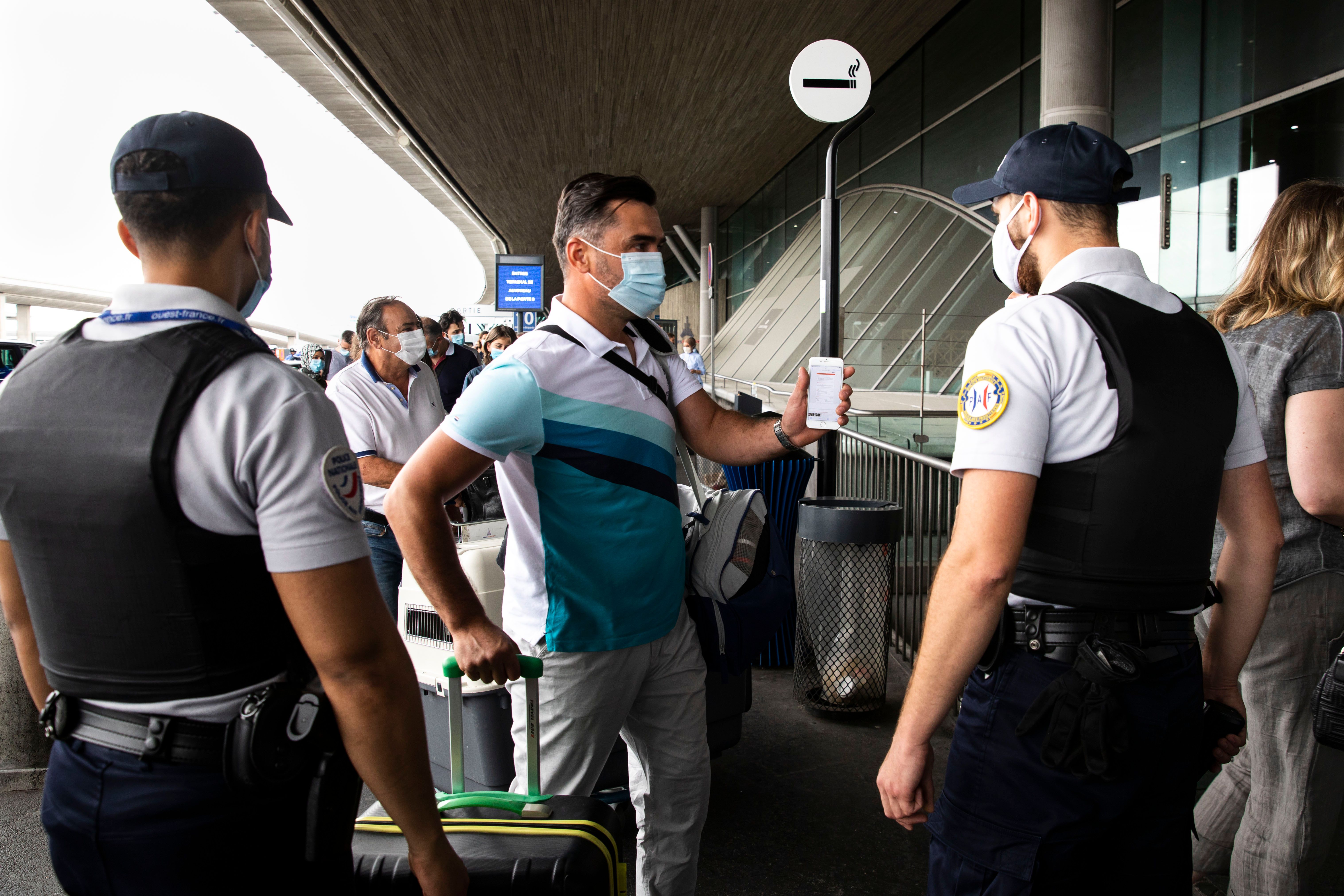The Impact of COVID-19 on the Terrorist Threat in the EU

According to Europol data, in 2019 the downward trend in the number of terrorist attacks (carried out, unsuccessful and thwarted), started in 2016, continued in EU countries. In 2019, a total of 119 of them were recorded (128 in 2018), with about two-thirds of them being thwarted. The number of attacks by Islamic, far-left or nationalist extremists has decreased, and the number of attacks by far-right extremists has increased.
Impact of the Pandemic on the Activities of Terrorist Organisations in the EU
As part of the fight against the pandemic, EU countries introduced restrictions in public life, which limited terrorist activity, in particular the implementation of complex operations requiring the involvement of a larger number of people and international communication. Prohibitions and restrictions on public gatherings temporarily eliminated the most common target of terrorist attacks from public life. Restrictions on international and domestic travel and the temporary closure of the borders of individual EU countries reduced the mobility of people involved in terrorist activities, including those not directly related to the execution of attacks (recruitment, reconnaissance, logistics, financial activities and courier work). In the short term, restrictions introduced in the EU and neighbouring countries also made the flow of foreign fighters more difficult and limited the possibility of EU citizens joining terrorist organisations operating in the EU's neighbourhood (their mobilisation had decreased even before the pandemic). To a lesser extent, the disruptions limited the activities of cells in the EU, which function autonomously and do not regularly use forms of personal communication.
The pandemic is also a biological threat for the terrorists themselves, which limits their ability to act. In the online propaganda magazine Al Naba, the Islamic State (IS) has included guidelines for dealing with its supporters in connection with the COVID-19 pandemic. IS recommended, among other things, not targeting the sites of viral outbreaks, although this type of advice was intended to influence active supporters who were also involved in logistical or financial activities during the pandemic, it should nevertheless be treated as propaganda to confirm the importance and viability of the organisation.
The pandemic limited the possibility of infiltration of terrorist groups by the services, but EU countries, in connection with attempts to control COVID-19 transmission, strengthened systemic surveillance methods, also applicable in anti-terrorist activities (preventive and reconnaissance). Examples include the development of mobile tracking applications using geolocation and central data management systems. Biometric methods of recognising travellers at airports and stations (as well as customers in shopping centre)s have started to be used to a greater extent. In the future, countries will be able to use such surveillance systems for counter-terrorist activities. However, this will be hampered by legal regulations regarding the protection of personal data which are compared to other regions of the world, restrictive.
However, terrorist organisations will adapt to the new conditions. Those groups with a base of operations outside the territory of EU countries can increase their Internet activity and improve their methods (e.g. encryption of communication channels, online instruction, impersonal communication, etc.) of disseminating propaganda, recruitment, training and fundraising activities. Radicalisation of native terrorists using online tools and instructional materials, already the safest and most effective method of recruiting and carrying out terrorist attacks in the EU, could become the main source of terrorist threat in the EU.
The consequences of the pandemic—the economic crisis, the strengthening of populism and anti-immigration attitudes—will strengthen the foundations for the activity of far-right organisations in the EU. Far-right terrorists responsible for the main attacks in 2019—15 March in New Zealand in Christchurch (51 victims), 3 August in the American El Paso (23) and 9 October in Halle (2)—were members of similar organisations, radicalised online and inspired by one another. Following the example of jihadist organisations, these groups increase their international activity and establish cooperation on a global scale. The activity of extreme-right groups in Europe is also stimulated by Russia, which, through its special services and native organisations (including the Russian Imperial Movement), supports them financially, enables them to establish contacts, and organises conferences and training courses for them on its territory.
The Pandemic and the Terrorist Threat from the EU’s Neighbourhood
The economic consequences of the pandemic will undermine the stability of many countries in North Africa, Sub-Saharan Africa, the Middle East and Central Asia. This can fuel existing armed conflicts and spark new ones. If this happens, it will strengthen the conditions for the radicalisation of the local population and will make it easier for terrorist organisations, led by IS and al-Qaeda, to find refuge on their territory and conduct local terrorist activities, as well as operations targeting EU countries. The destabilisation of the EU’s neighbourhood and the socio-economic stagnation caused by the pandemic may increase the migratory pressure from Africa and the Middle East to Europe in the coming years, which will be used by European far-right organisations for propaganda purposes.
In the last year, IS and al-Qaeda, wanting to rebuild structures and influence, maintain a wide network of ties with local groups and have intensified efforts to expand bridgeheads for activities in conflict zones (including in Libya, Syria, Yemen) and in partially bankrupt or poorly controlling countries (including Somalia and Mali). The pandemic, by weakening the stability of the countries in the region, facilitates the achievement of these goals, as well as the actions of local, smaller terrorist groups in North Africa and the Sahel. During this period, these groups have increased the scope of military actions against the governments of the region's states and the scope of quasi-administrative activities over parts of their territories, as was the case with Boko Haram in Nigeria and West Africa, and Ash Shabab in the Horn of Africa. In the long term, terrorist groups can increase their operational capabilities, including carrying out attacks in Europe.
Conclusions and Prospects
Since 2016, EU countries have recorded a decrease in the terrorist threat, with the exception of that posed by extreme right-wing groups whose activity is increasing. In the long term, however, the EU must prepare for a possible increase in terrorist threats. Islamist organisations (IS and al-Qaeda) must improve the methods of using the Internet to radicalise and recruit new members and carry out attacks if they are to maintain the scale of their activities, as in recent years both the number of their members and supporters and their operational capacity have clearly decreased. These organisations will also take advantage of the destabilisation in the EU's neighbourhood, e.g. in conflict-torn Libya and in the Sahel, to build a strong logistics base for their activities, similar to the case of IS in Syria in the years after 2011 and al-Qaeda in Afghanistan after 1994. Far-right groups, which may be used by Russia to conduct hybrid operations against NATO and EU countries will also be a greater threat.
Migrations from Africa and the Middle East to Europe can be used for propaganda purposes by the extreme right, e.g. as a factor increasing the terrorist threat in Europe from Islamic extremists. However, terrorist organisations have still not developed a systemic model of using migration to the EU to achieve their goals. The greatest threat in the medium and long term will be the activity of dispersed, native terrorists in the EU (Islamic, far-right and other extremists) using improvised methods of terrorist attacks.


